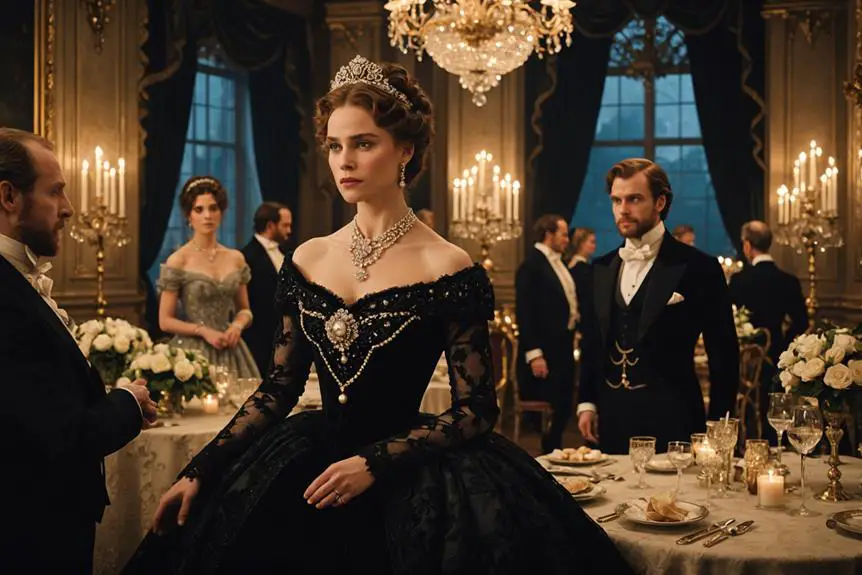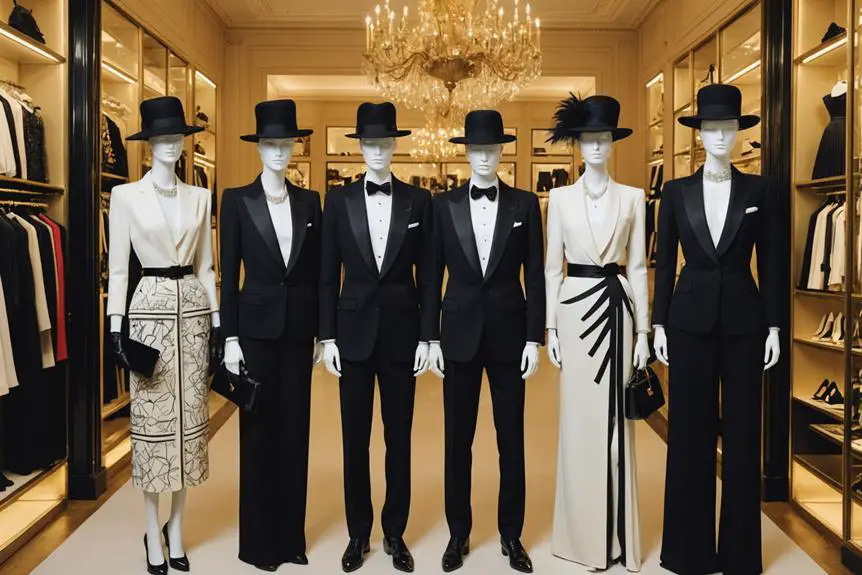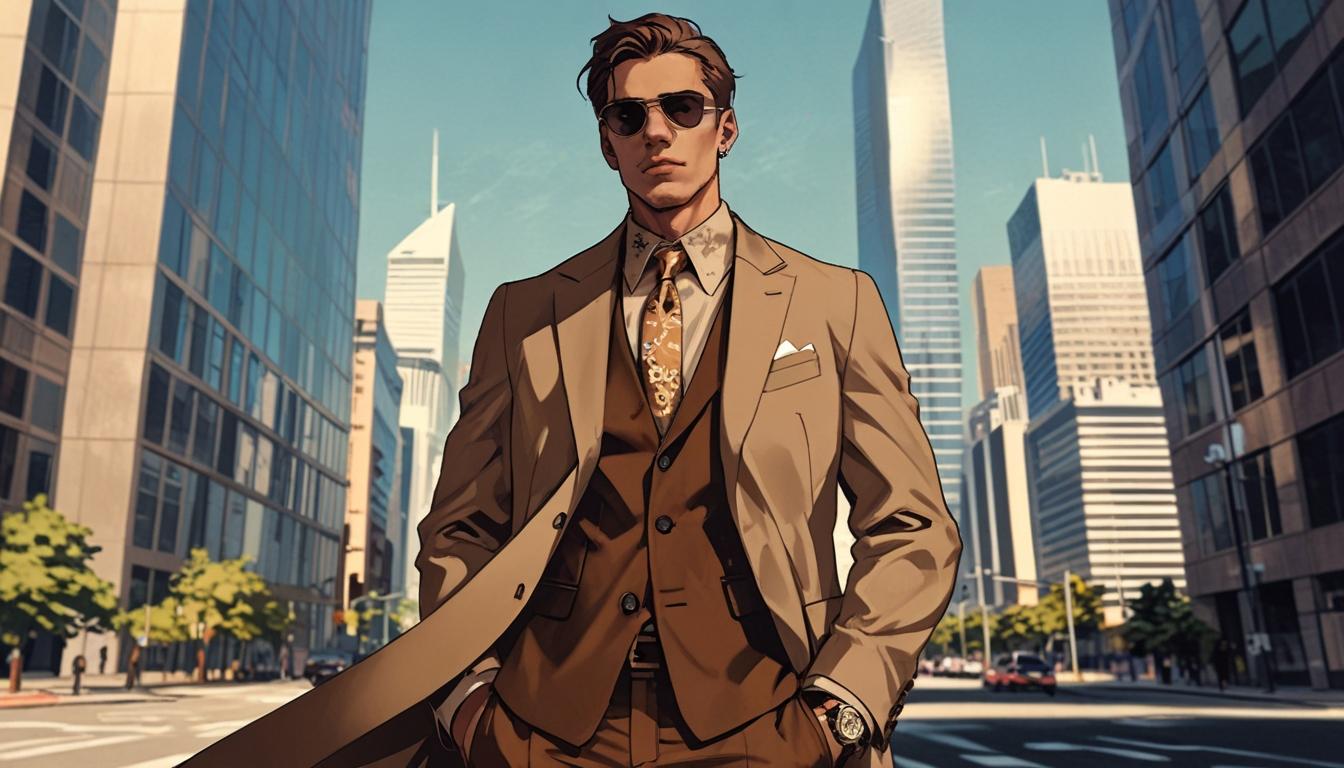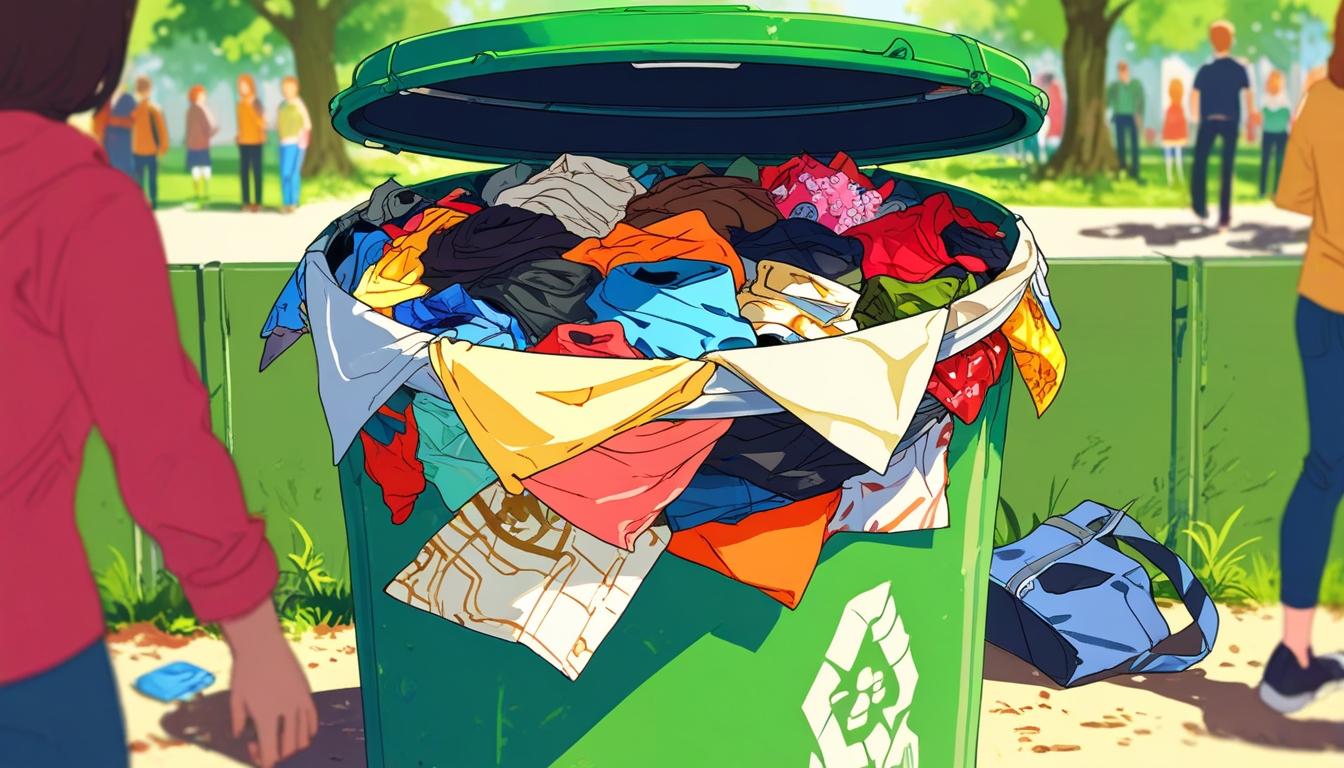Like a modern-day Madame Bovary, Anna Karenina's outfits serve as a canvas for her emotional turmoil and societal struggles. You might notice how each garment not only reflects the character's status but also hints at deeper themes within the narrative. For instance, consider the stark contrast between Anna's evolving wardrobe and Kitty's youthful innocence—there's a story woven into every fabric choice. What do these costumes reveal about the characters and their fates? The answers might surprise you, especially when you explore the intricate symbolism behind the designs.
Costume Design Influences
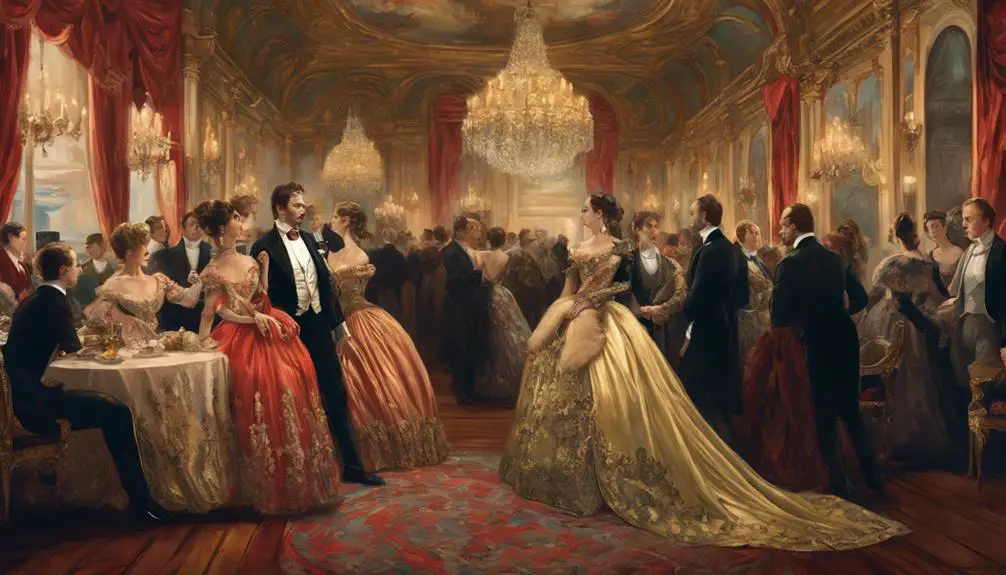
In crafting the costumes for "Anna Karenina," Jacqueline Durran drew from a rich tapestry of influences, blending 1950s haute couture with 1870s imperial Russian fashion. Can you imagine the elegance? Durran's costumes for Anna, especially her stunning black taffeta ballgown, really capture that chic vibe. You can practically feel the grandeur of imperial Russia with each stitch! This attention to detail in costume design is reminiscent of how vintage pieces, like those from Versace's logo evolution, tell a story through their visual elements.
Durran did her homework, diving into French fashion plates and old photographs to mix those historical elements with modern flair. This unique combination not only showcases Anna's character but also highlights her social status. You'll notice how the contrasting color palettes, including those lovely shades of pale blue, illustrate her emotional journey throughout the film. At first, Anna wears darker tones, signaling her struggles, but as her story unfolds, her wardrobe lightens, hinting at her transformations.
And let's not forget about the Russian uniforms! Vronsky's military-inspired outfits are designed to visually represent his position and authority. Together with Durran's creative vision, these costumes help tell a story of love, betrayal, and the weight of societal expectations.
When the costume, set, and makeup teams work together, it creates a cohesive world that pulls you right into the drama. So, next time you watch "Anna Karenina," pay close attention to the outfits—they're not just clothes; they're an essential part of the storytelling!
Character Costume Highlights
Costume highlights in "Anna Karenina" vividly illustrate the characters' emotional arcs and societal roles. You'll notice how Anna's costumes evolve from bright colors to darker tones, showcasing her emotional descent. Her stunning black ball gown, designed by Durran, is a standout piece that symbolizes her moral ambiguity and struggles. Isn't it fascinating how a simple dress can tell such a deep story?
Then there's Count Vronsky, who wears uniforms that reflect his status in the Russian military. His simplified designs echo traditional Russian tunics, giving him an authoritative presence that's hard to ignore. You can really feel the contrast between him and the other characters, can't you?
Now, let's talk about Kitty. Her pink ensemble is all about innocence and youth, which sharply contrasts with Anna's more elaborate and darker attire. It's like Kitty's living in a world of dreams while Anna's facing harsh realities.
And don't forget about Betsy! Her dramatic look, influenced by Japanese aesthetics, includes bustles and elaborate hairstyles. It sets her apart from the other female characters, adding a unique flair to the film.
Lastly, Jude Law's portrayal of Karenin features significant costume changes, with simplified outfits that highlight themes of power and monasticism. His style contrasts sharply with Anna's expressive wardrobe, making you think about the different paths these characters take. Overall, these costumes are more than just clothing; they're a window into each character's journey!
Symbolism in Fashion Choices
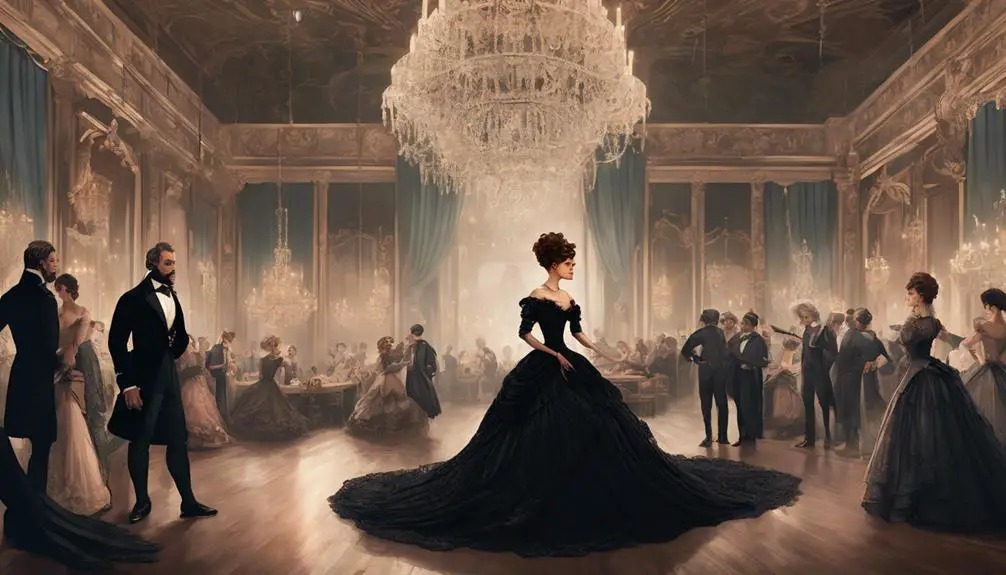
Fashion choices in "Anna Karenina" serve as powerful symbols that reflect the characters' inner struggles and societal roles. For example, Anna's initial purple silk gown is all about her role as a virtuous wife. But as the story progresses, her darker costumes take center stage, like that stunning black gown that screams tragedy and moral ambiguity. The luxurious, glossy finish of her garments, reminiscent of high-quality silk satin, emphasizes her elevated social status and the emotional weight she carries. You can really see how Durrans Costumes for Anna narrates her journey—each outfit tells a part of her story.
Now, think about the difference between Anna and Vronsky's costumes. Their contrasting colors highlight their emotional connection and different fates. While Anna's wardrobe leans into the darker shades, Kitty's pink ensemble radiates innocence. Isn't it fascinating how fashion can hint at what's to come? Kitty's look foreshadows her complicated relationship with Vronsky, setting her apart from Anna's more provocative choices.
The luxurious fabrics and intricate details in Anna's costumes not only signify her high status but also reflect her internal conflicts and societal rejection. And let's not forget the bling! The Chanel jewelry, valued at a whopping $2 million, isn't just there to look pretty; it symbolizes Anna's opulence and vanity. It's a visual metaphor for the heavy expectations society places on her. So, next time you watch "Anna Karenina," pay close attention to those costumes. They're more than just clothes; they're the essence of a Russian tale filled with emotion and depth!
Social Hierarchy Through Costumes
Every detail in the costumes of "Anna Karenina" highlights the rigid social hierarchy of Russian society. You can really see this through the choices made by costume designer Jacqueline Durran. For instance, Anna's dramatic gowns are stunning, filled with rich fabrics and bold designs that scream sophistication. In contrast, supporting characters wear muted tones, showcasing their lower status. Isn't it fascinating how a dress can tell a story?
Now, let's talk about the female dancers dressed in pastel colors. Those soft hues symbolize societal decay, showing just how far they are from the aristocracy's opulence. It's like their costumes are whispering secrets about their struggles. Then there's Vronsky, who struts around in Russian military-inspired uniforms that make him look powerful and important. Meanwhile, Karenin opts for simpler attire, which emphasizes his authority and almost monastic vibe.
And don't forget about the servant class! They're dressed in shades of dove gray, blending into the background. It's as if they're almost invisible, which really drives home the gap between the rich and the poor. It's all so cleverly crafted! Jacqueline Durran did extensive research into historical photographs and fashion plates to create authentic looks that effectively illustrate each character's societal role. It's amazing how much thought goes into these costumes, right? They truly bring the story to life, showing you just how intricate and layered social hierarchy can be.
Behind-the-Scenes Insights
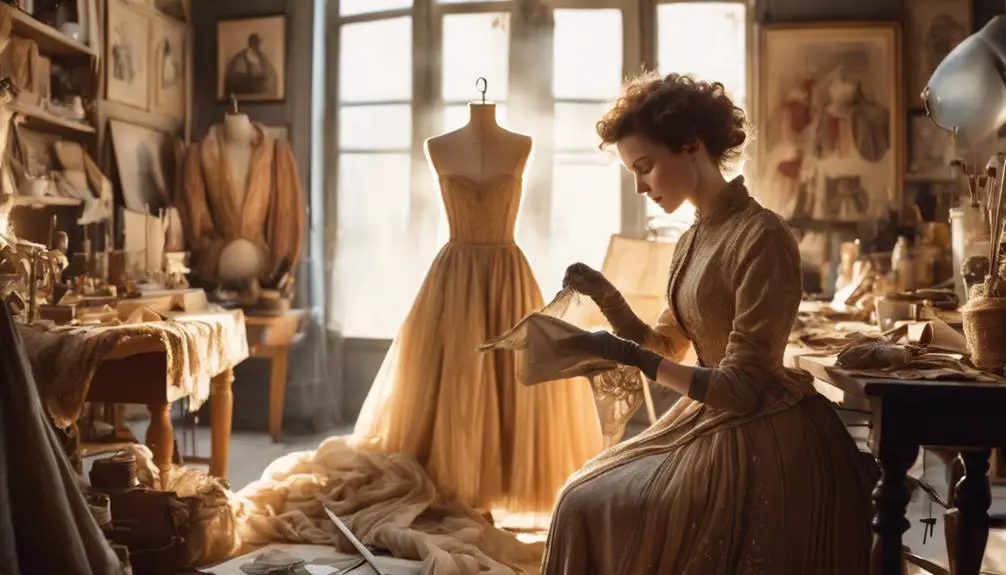
Behind the allure of the stunning costumes in "Anna Karenina," there's a wealth of behind-the-scenes stories that reveal the challenges faced by the cast and crew. You might be surprised to learn that Vivien Leigh, who played Anna, often arrived early to the studio. During breaks, she'd tackle crossword puzzles and play gin rummy—sounds fun, right? But filming wasn't all fun and games.
The weather posed a real problem. They used fake rain and snow, which took a toll on the intricate costumes designed by Cecil Beaton and created by Karenska. Vivien had to wear about fifteen different costumes, but some were duplicated due to the weather wreaking havoc. Can you imagine how much work that must have been?
Now, let's talk about those heavy costumes. Vivien expressed her discomfort, especially during hot days. Those aristocratic gowns weren't just pretty; they were a workout! Plus, with limited dressers available, keeping those long, bustled trains in check became a real juggling act. Picture the dressers hustling to maintain those elaborate outfits while making sure everything looked perfect on camera.
Frequently Asked Questions
What Would Anna Karenina Wear?
You'd see Anna's fashion evolve dramatically, reflecting her character's journey. Influenced by history, her outfits symbolize passion and societal status, while modern interpretations capture the theatrical presentation of her emotional turmoil and moral conflicts.
Are the Costumes in Anna Karenina Accurate?
They say clothes make the man. While the costumes in "Anna Karenina" prioritize character representation and cinematic realism, they blend historical accuracy with fashion evolution, using design inspiration to reflect cultural context and emotional journeys.
What Color Dress Does Anna Karenina Wear in the Book?
In "Anna Karenina," Anna's fashion reflects her character evolution. Her dresses, particularly the white symbolizing purity and the red showcasing passion, illustrate dress symbolism, color psychology, and societal constraints, revealing cultural influence throughout the narrative.
Who Designed the Costumes for Anna Karenina?
The costume designer, Jacqueline Durran, crafted outfits that emphasize historical accuracy and character symbolism. Her fabric choices and color palette reflect fashion influences from both the 1950s and 1870s, incorporating rich period details throughout the film.
